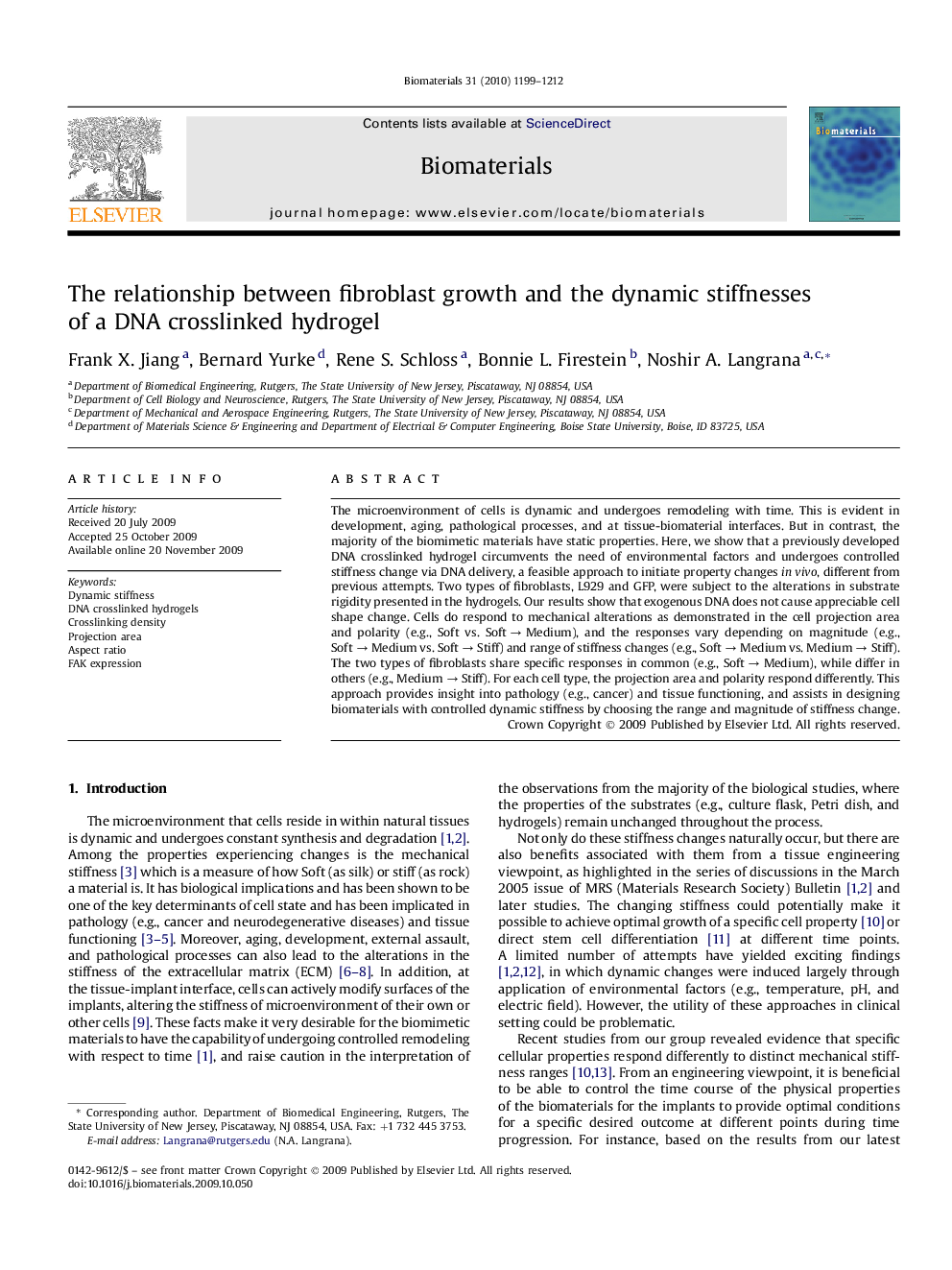| کد مقاله | کد نشریه | سال انتشار | مقاله انگلیسی | نسخه تمام متن |
|---|---|---|---|---|
| 9823 | 648 | 2010 | 14 صفحه PDF | دانلود رایگان |

The microenvironment of cells is dynamic and undergoes remodeling with time. This is evident in development, aging, pathological processes, and at tissue-biomaterial interfaces. But in contrast, the majority of the biomimetic materials have static properties. Here, we show that a previously developed DNA crosslinked hydrogel circumvents the need of environmental factors and undergoes controlled stiffness change via DNA delivery, a feasible approach to initiate property changes in vivo, different from previous attempts. Two types of fibroblasts, L929 and GFP, were subject to the alterations in substrate rigidity presented in the hydrogels. Our results show that exogenous DNA does not cause appreciable cell shape change. Cells do respond to mechanical alterations as demonstrated in the cell projection area and polarity (e.g., Soft vs. Soft → Medium), and the responses vary depending on magnitude (e.g., Soft → Medium vs. Soft → Stiff) and range of stiffness changes (e.g., Soft → Medium vs. Medium → Stiff). The two types of fibroblasts share specific responses in common (e.g., Soft → Medium), while differ in others (e.g., Medium → Stiff). For each cell type, the projection area and polarity respond differently. This approach provides insight into pathology (e.g., cancer) and tissue functioning, and assists in designing biomaterials with controlled dynamic stiffness by choosing the range and magnitude of stiffness change.
Journal: Biomaterials - Volume 31, Issue 6, February 2010, Pages 1199–1212